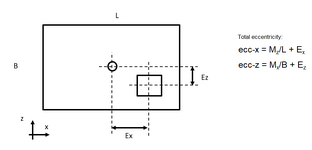I found this graph (see attached Fig 6.14-d) from another post.
It's for estimating footing bearing pressures when effective load is outside the kern.
Has anyone come across formulate to use instead of reading from graph.
Curves are from American Railway Engineering Association.
It's for estimating footing bearing pressures when effective load is outside the kern.
Has anyone come across formulate to use instead of reading from graph.
Curves are from American Railway Engineering Association.


